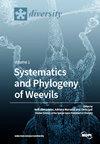Assessment of Anthropogenic Impacts on the Genetic Diversity of Phragmites australis in Small-River Habitats
IF 2.1
3区 生物学
Q2 BIODIVERSITY CONSERVATION
引用次数: 0
Abstract
Common reed is often used as a model plant to study the anthropogenic impacts on ecosystems at local and global scales. As a community-forming species, it is directly exposed to the impacts of human activities on the ecosystem. The aim of our study was to evaluate the patterns of genetic diversity in common reed stands located in habitats that are differently affected by anthropogenic factors. We studied whether riverbed modifications, land cover in the neighborhood of the stand and the chemical and physical parameters of the river water affect the genetic diversity of P. australis at the studied sites. Using DNA fingerprinting, we genotyped 747 plants from 42 sites located in 16 small Lithuanian rivers. Bayesian clustering and principal coordinate analysis revealed two main gene pools at the population (river) level. At the site level (i.e., considering all sites independently of their rivers), polymorphism was high even between sites in the same river. Our study revealed a negative relationship between the concentration of nitrogen compounds and the genotypic richness of P. australis populations. We did not find any correlations between the other chemical parameters of the water and the parameters of the genetic diversity. Additionally, there were no genetic differences between sites in modified and unmodified river sections or between sites that differed in land cover type in the neighborhood of the stand.小河流生境中芦苇遗传多样性的人为影响评价
芦苇常被作为模式植物在局地和全球尺度上研究人类活动对生态系统的影响。作为群落形成物种,它直接受到人类活动对生态系统的影响。本研究的目的是评价不同生境中芦苇林的遗传多样性模式。研究了河床改造、林分附近土地覆被和河水理化参数是否对南方杨遗传多样性有影响。利用DNA指纹技术,我们对来自立陶宛16条小河的42个地点的747株植物进行了基因分型。贝叶斯聚类和主坐标分析揭示了种群(河)水平上的两个主要基因库。在站点水平上(即,考虑所有独立于河流的站点),即使在同一河流的站点之间,多态性也很高。我们的研究表明,氮化合物浓度与南方稻属种群的基因型丰富度呈负相关。我们没有发现水的其他化学参数与遗传多样性参数之间存在任何相关性。此外,改良河段和未改良河段的样地之间以及林分附近不同土地覆被类型的样地之间没有遗传差异。
本文章由计算机程序翻译,如有差异,请以英文原文为准。
求助全文
约1分钟内获得全文
求助全文
来源期刊

Diversity-Basel
Environmental Science-Ecological Modeling
CiteScore
3.40
自引率
12.50%
发文量
925
审稿时长
11 weeks
期刊介绍:
Diversity (ISSN 1424-2818) is an international and interdisciplinary journal of science concerning diversity concept and application, diversity assessment and diversity preservation. It is focused on organismic and molecular diversity. It publishes reviews, regular research papers and short notes in the regular issues. Related news and announcements are also published. Our aim is to encourage scientists to publish their experimental and theoretical results in as much detail as possible. Therefore, there is no restriction on the length of the papers. Full experimental details must be provided so that the results can be reproduced.
 求助内容:
求助内容: 应助结果提醒方式:
应助结果提醒方式:


